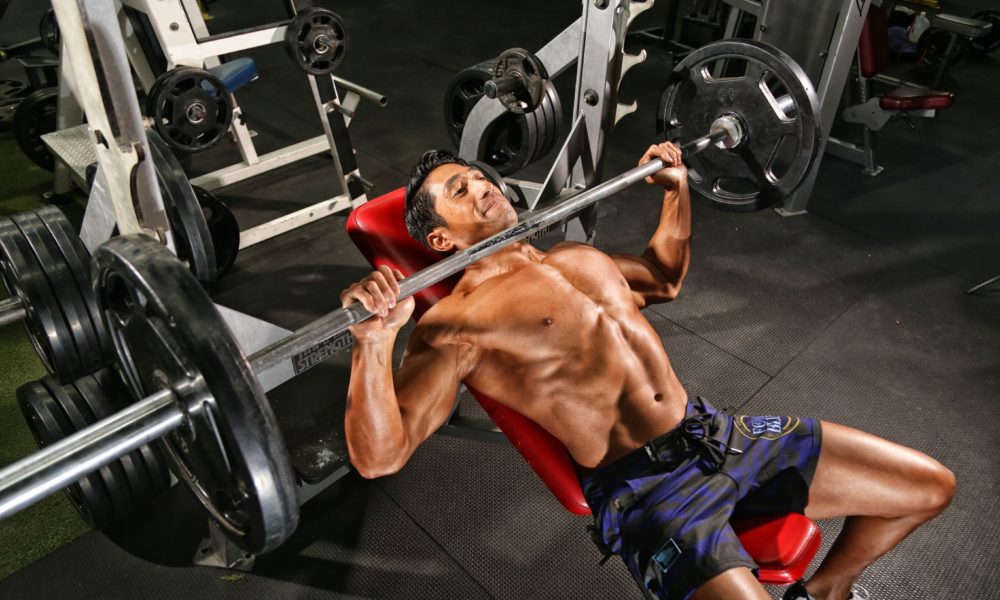Gynecomastia, often shrouded in misunderstanding and stigma, affects a significant portion of the male population at various life stages. This condition, characterized by the enlargement of breast tissue in males, can lead to psychological distress and a quest for solutions. Through an evidence-based approach, this post aims to demystify gynecomastia by exploring its causes, impacts on mental health, and available treatment options. By providing a clear understanding rooted in medical research, we empower individuals facing gynecomastia with knowledge and pathways towards managing their condition effectively.
Understanding Gynecomastia and Its Impact
Condition Overview
Gynecomastia involves the enlargement of male breast tissue. It’s not just fat. It’s actual glandular tissue, growing like breasts. This can happen in one or both breasts.
Men of any age can develop gynecomastia. Hormonal imbalances often cause it. Other times, medications or health conditions are to blame.
Emotional Effects
The impact on self-esteem is significant. Men with gynecomastia may avoid activities that require removing their shirts. They might skip swimming or gym sessions.
Body image issues arise too. Comparing oneself to societal ideals becomes a source of stress and anxiety.
Physical Discomfort
In some cases, gynecomastia causes pain or tenderness in the chest area.
Wearing certain clothes becomes uncomfortable as well. Tight shirts highlight the condition more than loose ones do.
Coping Mechanisms
Men find various ways to cope with gynecomastia:
-
Compression garments help minimize the appearance.
-
Open conversations with loved ones provide emotional support.
-
Seeking professional advice is crucial for understanding treatment options.
Understanding this condition is vital for those affected by it and their supporters alike. Knowing you’re not alone makes a difference.
Causes and Prevention of Gynecomastia
Hormonal Imbalances
Hormonal imbalances play a key role in the development of gynecomastia. This condition often occurs when there is an excess of estrogen compared to testosterone in the body. Such imbalances can result from natural changes during puberty or aging.
Men experiencing these hormonal shifts may notice an increase in glandular tissue, leading to larger breasts. Monitoring hormone levels through regular check-ups can help identify any imbalances early on.
Obesity Link
Obesity is another significant factor contributing to gynecomastia. Excess fat tissues can produce additional estrogen, further unbalancing hormone levels favoring breast tissue growth.
Maintaining a healthy weight through diet and exercise not only reduces the risk but also aids in managing existing conditions. Weight management strategies are crucial for prevention and mitigation.
Medication Effects
Certain medications have been linked to the development of true gynecomastia by affecting hormone levels or promoting glandular tissue growth directly. These include:
-
Anti-androgens used for prostate issues
-
Some types of antidepressants
-
Heart medications containing digitalis
-
Anabolic steroids and androgens
Patients should discuss potential side effects with their healthcare providers before starting any new medication regimen.
Exercise and Prevention of Gynecomastia
Cardio Workouts
Cardiovascular exercises are crucial in reducing body fat. Running, cycling, and swimming are excellent options. They help men lose excess fatty tissue, including around the chest.
Swimming is especially beneficial. It combines cardio with strength training for the arms and chest. This dual benefit makes it a top choice for preventing gynecomastia.

Strength Training
Focusing on the chest muscles can lead to a firmer appearance. Exercises like bench presses and push-ups target these areas effectively. Using barbells adds intensity to the workout, strengthening the chest further.
Consistency in performing these exercises is vital. Regular workouts ensure continuous improvement in muscle tone and reduction of fatty tissue.
Routine Consistency
Maintaining a consistent exercise routine is key to prevention. A mix of cardiovascular activities and strength training should be part of weekly schedules.
Men should aim for at least 150 minutes of moderate aerobic activity or 75 minutes of vigorous activity per week, along with two days of muscle-strengthening activities.
-
Pros:
-
Reduces overall body fat
-
Targets specific areas like the chest
-
Cons:
-
Requires discipline
-
May need guidance for correct form
Exercise plays a significant role in preventing gynecomastia by targeting both general body fat reduction and strengthening chest muscles specifically. By combining cardiovascular workouts with strength training—and doing so consistently—men can significantly reduce their risk or manage existing conditions more effectively.
Reducing Gynecomastia Through Exercise
HIIT Workouts
High-intensity interval training, or HIIT, is a powerful tool for burning fat. It alternates short bursts of intense activity with periods of rest. This approach boosts your metabolism significantly.
HIIT can be especially effective in reducing gynecomastia. It targets body fat across the entire body, including the chest area. Regular HIIT sessions lead to noticeable improvements over time.
Compound Movements
Exercises like push-ups are called compound movements because they work multiple muscle groups at once. They’re efficient and effective for building strength and definition.
For those dealing with gynecomastia, focusing on exercises that target the chest, shoulders, and arms is key. Push-ups help in defining pectoral muscles, making them more prominent as body fat decreases.
Lowering Body Fat
A lower body fat percentage makes a big difference in how your chest looks. As you lose weight overall, the appearance of gynecomastia can diminish.
To achieve this:
-
Combine cardio workouts with strength training.
-
Eat a balanced diet rich in nutrients but low in excess calories.
Effective Exercises for Managing Gynecomastia
Incline Press
The incline press specifically targets the upper chest area. This is key for those managing gynecomastia, as it helps in defining this region. By adjusting the bench to an incline, you shift the focus of your workout.
First, lie back on an inclined bench. Hold a dumbbell in each hand at chest level. Then push upwards until your arms are fully extended before lowering them back down.
Dumbbell Flyes
Dumbbell flyes work wonders in improving chest muscle tone. They stretch and contract the chest muscles, offering a comprehensive workout that aids in sculpting the chest area.
Start by lying flat on a bench with a dumbbell in each hand. Extend your arms above your chest with a slight bend at the elbows. Slowly lower them to the sides until you feel a stretch across your chest. Bring them back up again.
Bodyweight Exercises
Bodyweight exercises provide convenience and flexibility since they don’t require gym equipment. These exercises are perfect for those looking to manage gynecomastia without access to weights or machines.
-
Push-ups help strengthen and define chest muscles.
-
Planks improve core stability while indirectly working on the upper body strength.
Incorporating these exercises into your routine can significantly impact managing gynecomastia by strengthening and toning chest muscles without needing specialized equipment.
Expert Opinions on Exercise Effectiveness
Exercise Impact
Experts highlight that exercise can indeed reduce the size of fatty tissue associated with gynecomastia. However, they caution against expecting it to eliminate glandular tissue. This distinction is crucial for patients seeking ways to manage their condition.
Exercise routines focusing on weight loss and muscle toning can improve the overall appearance of the chest area. Yet, despite rigorous workouts, some may find persistent glandular tissue remains unaffected. This fact underscores the importance of setting realistic expectations regarding exercise outcomes.
Diet and Surgery
A balanced diet plays a significant role in enhancing exercise results for individuals dealing with gynecomastia. Experts recommend a diet low in processed foods and high in nutrients to support fat loss without compromising muscle mass.
-
Key components include:
-
Lean proteins
-
Whole grains
-
Fruits and vegetables
-
Healthy fats
For those who do not see desired changes through exercise and diet alone, surgery might be considered a necessary step. It’s often seen as the only permanent solution for removing glandular tissue effectively.
Surgical methods vary based on individual cases but typically involve direct removal of excess tissue from the chest area. Patients should consult healthcare providers to understand all options available.
Gynecomastia Surgery Considerations
Surgical Option
Gynecomastia surgery becomes a consideration after lifestyle changes and exercise have not achieved the desired effects. This step is significant for many gynecomastia patients seeking more permanent solutions.
The decision to undergo surgery should not be taken lightly. It’s essential to weigh the benefits against potential risks. Recovery time varies from person to person but typically spans a few weeks. During this period, patients must follow their surgeon’s guidance closely to ensure optimal healing.
Risks and Recovery
Understanding the risks involved in any surgical procedure is crucial. For gynecomastia surgery, these can include scarring, infection, or uneven chest contours post-recovery.
Recovery time is another critical aspect that requires preparation and patience. Most gynecomastia patients can return to work within a week or two, provided their job does not involve heavy lifting or strenuous activity. Full recovery and final results might take several months to become evident.
Choosing a Surgeon
Selecting an experienced surgeon directly influences the success of gynecomastia surgery outcomes. Look for professionals with specific expertise in male breast reduction procedures.
A skilled surgeon not only ensures better aesthetic results but also minimizes potential complications during and after the operation. Before making a decision, consult with multiple specialists to discuss your goals and concerns thoroughly.
Post-Surgery Fitness Guidelines
Gradual Reintroduction
After a surgical procedure for gynecomastia, it’s crucial to ease back into exercise. Many patients are eager to return to their routines. However, patience is key. Start with low-impact activities that do not strain the incision area.
Walking is an excellent choice initially. It boosts circulation without putting too much pressure on the body. Over time, you can gradually increase the intensity of your workouts.
Consult Healthcare Providers
Before jumping back into more intense workouts, consult your healthcare provider. They can give advice tailored to your recovery progress and specific condition.
This step ensures you don’t risk reopening scars or causing other complications related to the surgery site.
Focus on Low-Impact Activities
Low-impact exercises are beneficial in early post-surgery stages.
-
Examples include:
-
Swimming (once wounds have sufficiently healed)
-
Cycling on a stationary bike
-
Yoga
These activities help maintain fitness levels without risking damage to healing tissues around the incision sites.
Weight loss through cardio exercises should also be approached with caution initially. Ensuring that any activity does not negatively impact recovery is essential for long-term success in managing this condition and preventing its recurrence.
Final Remarks
Gynecomastia, a condition affecting many, has profound impacts on physical and emotional health. The journey from understanding its causes to exploring surgical and non-surgical interventions highlights the importance of comprehensive approaches. Exercise emerges as a pivotal prevention and management strategy, supported by expert opinions and underscored by post-surgery fitness guidelines. Embracing a holistic view that combines lifestyle adjustments, medical advice, and possible surgical intervention offers the best path forward for those affected. This synthesis of knowledge not only empowers individuals but also encourages a proactive stance towards health.
The exploration of gynecomastia underscores the necessity of informed decision-making and the value of expert guidance. For those navigating this condition, seeking professional advice tailored to personal needs is crucial. Let this article serve as a stepping stone towards understanding and managing gynecomastia effectively. Embrace the journey with confidence, equipped with insights and strategies discussed herein.
Frequently Asked Questions
What is Gynecomastia and how does it affect individuals?
Gynecomastia is a condition characterized by the enlargement of breast tissue in males, often leading to physical discomfort and psychological distress.
Can Gynecomastia be prevented?
While not all cases are preventable, maintaining a healthy weight and avoiding substances known to trigger gynecomastia, such as steroids and excessive alcohol, can reduce risk.
How effective is exercise in reducing Gynecomastia?
Exercise can help manage gynecomastia by reducing overall body fat. However, targeted chest exercises alone may not eliminate the condition but can improve appearance.
What types of exercises are recommended for managing Gynecomastia?
Cardiovascular activities combined with strength training focusing on the upper body can help. Exercises like push-ups, bench presses, and rows are beneficial.
Do experts believe exercise alone can resolve Gynecomastia?
Experts agree that while exercise contributes to overall health and can improve the appearance of gynecomastia, it may not completely resolve the condition without medical intervention for some individuals.
When should one consider surgery for Gynecomastia?
Surgery should be considered when gynecomastia causes significant discomfort or emotional distress and has not responded to other treatments such as lifestyle changes or medication.
What post-surgery fitness guidelines are advisable for someone who had Gynecomastia surgery?
Post-surgery guidelines typically recommend gradual reintroduction of physical activity with specific emphasis on gentle exercises initially to avoid complications. Consulting with healthcare providers before resuming intense workouts is essential.





